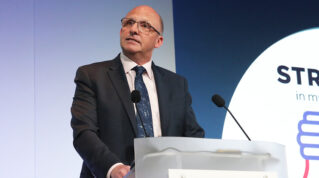I ran past the Bryant and May factory in Bow in the Easter Holidays. It was day two of a 46-mile personal pilgrimage, so I was very happy to stop for a breather under The Match Girls’ Strike blue plaque and offer up a prayer to the women in whose footsteps we still follow, 140 years on.
Only a day or two later, the 2023/24 gender pay gap data started emerging. ‘What would Annie Besant think?’ I wondered.
Contrary to popular belief, the gender pay gap is not about a woman doing the same job as a man for less pay, or vice versa. (Though it happens and I’ve lived it.) It’s actually a measure of what men and women earn across the piece. Are women on average earning less than men, and by how much?
The answer is yes. Last year, women earned 91p for every pound men made. The divide is closing, albeit quite slowly, but men essentially earn more per hour than women.
You might think that our sector, with its predominantly female workforce, would buck the trend. Think again.
Explore the quartiles data of MAT gender pay gap reports and a very clear pattern emerges. While significantly more women work in our schools, men are disproportionately represented in the top two quartiles. It is pretty standard for more than one-third of those working in the top half to be men and around 90 per cent of those in the bottom quartile to be women.
These gender pay gap reports are pretty limp in how they address the matter too. E-ACT’s median gender pay gap is nearly 28 per cent, yet its Gender Pay Gap 2023 report runs to less than a page. It says little more than that the trust is an equal opportunities employer, that 27 per cent of its workforce are men, and that they use national pay scales to determine salaries.
If the obligation to publish a gender pay gap report was intended to pull organisations towards actually doing something about it, I’m not sure it’s working.
Gender pay gap reports are pretty limp
Shifting the trend at the bottom end would no doubt enrich our schools. How great would it be if more men chose to work as support staff, taking on part-time jobs to fit around childcare, helping five-year-olds eat their lunch and supporting with reading groups?
But it’s at the top end where the numbers really tip the balance. Just like in the match girls’ day, the men at the top (9 in 10 are men) earn astronomically more than the women at the bottom (9 in 10 are women). The Guardian reports that, “of the worst-performing 100 public bodies with the largest gender pay gap, all but three were academy trusts”. This is in great part due to how stratospheric some CEO salaries are.
CEO pay has never been subject to pay scales. There have been attempts to pull these salaries back to earth slightly. However, the shift is minimal.
I think it is time the sector engaged more determinedly with ratio setting. If someone at the bottom is paid £20,000 FTE, the person at the top would only be able to be paid whatever the earnings ratio was set (e.g. £200,000 if the ratio was set at 1:10).
The NGA mentions ratios in its guidance on CEO pay. I’d like to hear more people pushing this: unions, the CST, the ESFA. As a Quaker, I like the look of 1:4.7, the ratio Quakers in Britain have set themselves. This is wildly unrealistic in comparison with the current state of affairs, where some CEOs are paid over £400,000K, but I like to be ambitious.
Let’s remember there are pay committees across the country supposedly reviewing, scrutinising and setting pay. What is happening around these tables? Can a trust that pays its lowest-paid workers one-twentieth of what their CEO earns really claim to be tackling disadvantage? Is it true to the values it no doubt loudly announces to its communities?
I think Annie Besant would be truly saddened. We have many more miles to go.








Your thoughts